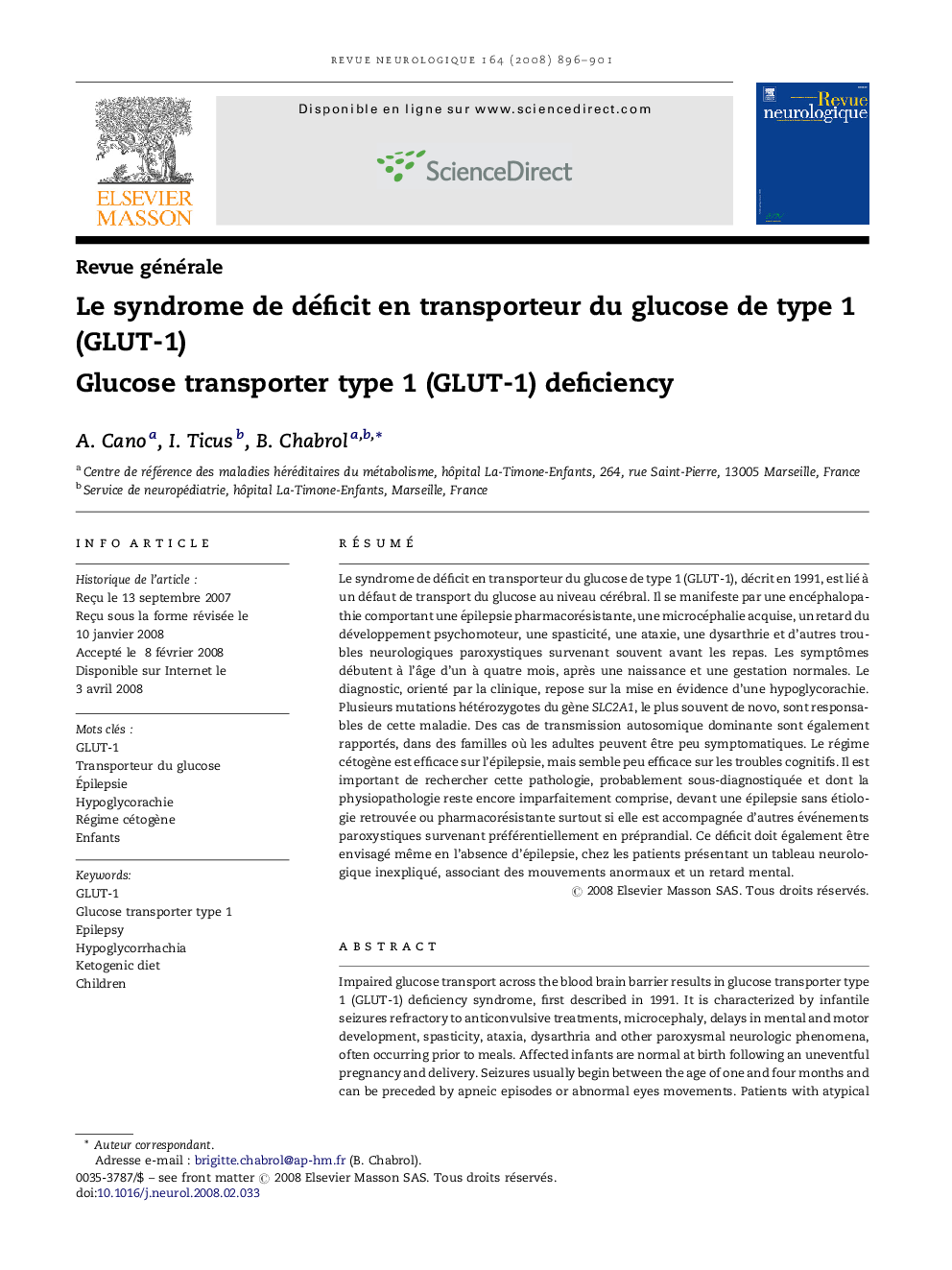| کد مقاله | کد نشریه | سال انتشار | مقاله انگلیسی | نسخه تمام متن |
|---|---|---|---|---|
| 3089863 | 1190245 | 2008 | 6 صفحه PDF | دانلود رایگان |
عنوان انگلیسی مقاله ISI
Le syndrome de déficit en transporteur du glucose de type 1 (GLUT-1)
دانلود مقاله + سفارش ترجمه
دانلود مقاله ISI انگلیسی
رایگان برای ایرانیان
کلمات کلیدی
موضوعات مرتبط
علوم زیستی و بیوفناوری
علم عصب شناسی
عصب شناسی
پیش نمایش صفحه اول مقاله

چکیده انگلیسی
Impaired glucose transport across the blood brain barrier results in glucose transporter type 1 (GLUT-1) deficiency syndrome, first described in 1991. It is characterized by infantile seizures refractory to anticonvulsive treatments, microcephaly, delays in mental and motor development, spasticity, ataxia, dysarthria and other paroxysmal neurologic phenomena, often occurring prior to meals. Affected infants are normal at birth following an uneventful pregnancy and delivery. Seizures usually begin between the age of one and four months and can be preceded by apneic episodes or abnormal eyes movements. Patients with atypical presentations such as mental retardation and intermittent ataxia without seizures, or movement disorders characterized by choreoathetosis and dystonia, have also been described. Glucose is the principal fuel source for the brain and GLUT-1 is the only vehicle by which glucose enters the brain. In case of GLUT-1 deficiency, the risk of clinical manifestations is increased in infancy and childhood, when the brain glucose demand is maximal. The hallmark of the disease is a low glucose concentration in the cerebrospinal fluid in a presence of normoglycemia (cerebrospinal fluid/blood glucose ratio less than 0.4). The GLUT-1 defect can be confirmed by molecular analysis of the SCL2A1 gene or in erythrocytes by glucose uptake studies and GLUT-1 immunoreactivity. Several heterozygous mutations, with a majority of de novo mutations, resulting in GLUT-1 haploinsufficiency, have been described. Cases with an autosomal dominant transmission have been established and adults can exhibit symptoms of this deficiency. Ketogenic diet is an effective treatment of epileptic manifestations as ketone bodies serve as an alternative fuel for the developing brain. However, this diet is not effective on cognitive impairment and other treatments are being evaluated. The physiopathology of this disorder is partially unclear and its understanding could explain the clinical heterogeneity of GLUT-1 deficiency patients and lead to new treatments. This probably under-diagnosed deficiency should be suspected in children with unexplained neurological disorders including epilepsy, mental retardation and movement disorders and confirmed by a lumbar puncture and the direct sequencing of GLUT-1.
ناشر
Database: Elsevier - ScienceDirect (ساینس دایرکت)
Journal: Revue Neurologique - Volume 164, Issue 11, November 2008, Pages 896-901
Journal: Revue Neurologique - Volume 164, Issue 11, November 2008, Pages 896-901
نویسندگان
A. Cano, I. Ticus, B. Chabrol,